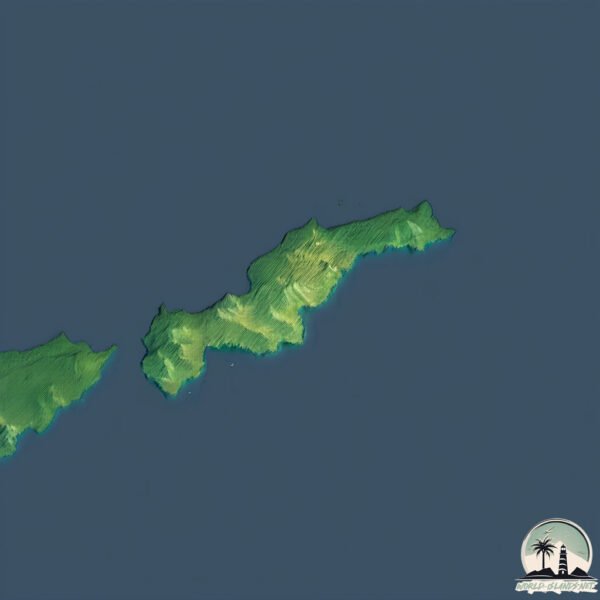Welcome to Île du Levant , a Temperate island in the Mediterranean Sea – Western Basin, part of the majestic Atlantic Ocean. This guide offers a comprehensive overview of what makes Île du Levant unique – from its geography and climate to its population, infrastructure, and beyond. Dive into the details:
Geography and size of Île du Levant
Size: 10.1 km²Coastline: 22.5 kmOcean: Atlantic OceanSea: Mediterranean Sea – Western BasinContinent: Europe
Île du Levant is a Medium Island spanning 10 km² with a coastline of 22 km.
Archipel: –
Tectonic Plate: Eurasia – One of the world’s largest tectonic plates, the Eurasian Plate covers a significant portion of Europe and Asia. It’s characterized by diverse geological features, including the Ural Mountains, the European Plain, and the Himalayas formed from its collision with the Indian Plate.
The geographic heart of the island is pinpointed at these coordinates:
Climate and weather of Île du Levant
Climate Zone: TemperateClimate Details: Hot-Summer Mediterranean ClimateTemperature: Hot Summer
Climate Characteristics: Characterized by hot, dry summers and mild, wet winters, typical of coastal areas with abundant sunshine.
Topography and nature of Île du Levant
Timezone: UTC+01:00Timezone places: Europe/ParisMax. Elevation: 95 m Mean Elevation: 44 mVegetation: Evergreen Broadleaf ForestTree Coverage: 59%
The mean elevation is 44 m. The highest elevation on the island reaches approximately 95 meters above sea level. The island is characterized by Plains: Flat, low-lying lands characterized by a maximum elevation of up to 200 meters. On islands, plains are typically coastal lowlands or central flat areas.
Dominating Vegetation: Evergreen Broadleaf Forest
Vegetation: 5 vegetation zones – Highly Diverse Island
Infrastructure and Travelling to Île du Levant
Does the island have a public airport? no .
Does the island have a major port? no .
The mean population of Île du Levant is 442 per km². Île du Levant is Moderately Inhabited. The island belongs to France .
Continuing your journey, Île de Porquerolles is the next notable island, situated merely km away.
ILE DU LEVANT (Extrait de Reportages Découverte , Un été sur les îles d'Or) (8/9/2019)_JENNY
ILE DU LEVANT (Extrait de Reportages Découverte , 14 Juillet, Un été sur les îles d'Or) (8/9/2019) (Documentaire recoupé pour ...
ILE DU LEVANT (Extrait de Reportages Découverte , Un été sur les îles d'Or) (8/9/2019)_JENNY
ILE DU LEVANT (Extrait de Reportages Découverte , 14 Juillet, Un été ...
ILE DU LEVANT (Extrait de Reportages Découverte , 14 Juillet, Un été sur les îles d'Or) (8/9/2019) (Documentaire recoupé pour ...
Au loin Île du Levant, Port-Cros.#var83 #méditerranée #travel #summer #nature
île du levant, plage des Grottes, grand entretien 2014
24 mars 2014, arrivée d'une pelle à la plage pour refermer la grosse ...
24 mars 2014, arrivée d'une pelle à la plage pour refermer la grosse ornière provoquée par les pluies abondantes de l'hiver.
France is classified as Developed region: G7: Group of Seven – Major advanced economies, including Canada, France, Germany, Italy, Japan, the United Kingdom, and the United States. The level of income is High income: OECD.
News – Latest Updates and Headlines from Île du Levant
Stay informed with the most recent news and important headlines from Île du Levant. Here’s a roundup of the latest developments.
Loading...
Please note: The data used here has been primarily extracted from satellite readings. Deviations from exact values may occur, particularly regarding the height of elevations and population density. Land area and coastline measurements refer to average values at mean high tide.

